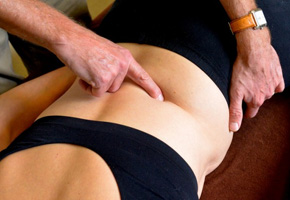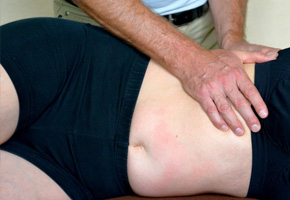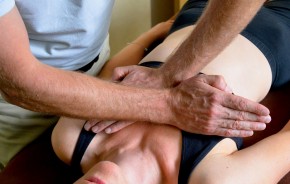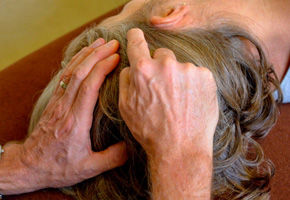Manual Therapy
Many of the following manual therapy techniques treat the fascia and are used regularly within our practice.
Why treat the fascia?
Commonly used fascial techniques
Other manual therapy techniques used
Muscle Energy Technique (MET)
Muscle Energy Technique (MET) Is a manual therapy technique directed at the neuro-muscular element of the musculoskeletal system. It’s thought that one group of muscles surrounding a joint holds a spasm as a result of trauma. This results in increased tension on one side of a joint causing mal-tracking and a restrictive barrier in the direction that stretches the spasmed muscles. With MET, the practitioner puts slight tension on the spasmed muscles and asks the patient to exert a gentle isometric muscle contraction. After ceasing the muscle contraction, the practitioner moves the joint further into its restricted range to the new restrictive barrier, repeating this procedure several times to remove the barrier and allow normal joint motion.
Articulatory and Manipulative techniques
Articulatory and Manipulative techniques are manual therapies directed at the joints within the musculoskeletal system. Articulatory techniques are repetitive oscillations applied to a joint into the direction of the restrictive barrier. Its purpose is to increase range of motion and stretch the connective tissue surrounding the restricted joint. Manipulative techniques are similar except instead of oscillating the joint, a gentle thrust is applied. It’s thought that this creates a period of electrical silence in all muscles surrounding the joint allowing the central nervous system to correct tone imbalances within these muscles resulting in increased joint range and reduction of pain.
Soft tissue techniques
Soft tissue techniques are manual techniques which focus on the muscular and fascia of the musculoskeletal system. Incorporating massage, stretching and ischaemic pressures, the therapeutic goal is to reduce muscle spasm, fluid congestion and tissue immobility.





